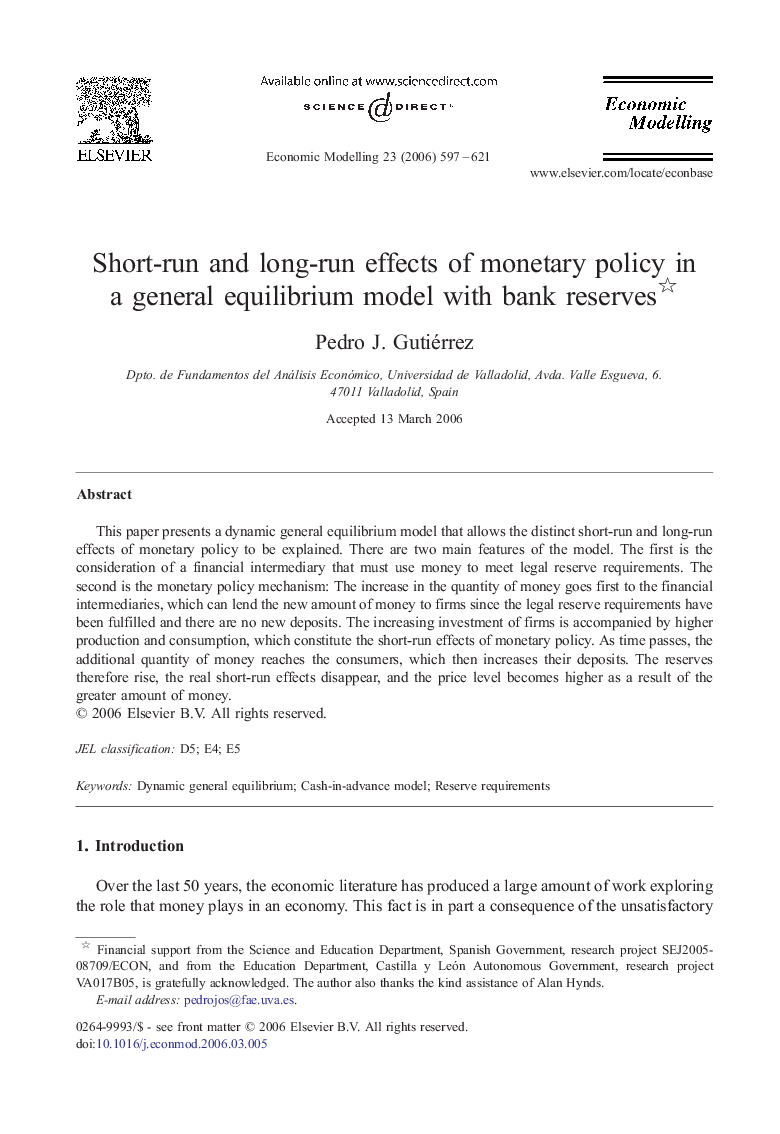| Article ID | Journal | Published Year | Pages | File Type |
|---|---|---|---|---|
| 5056042 | Economic Modelling | 2006 | 25 Pages |
Abstract
This paper presents a dynamic general equilibrium model that allows the distinct short-run and long-run effects of monetary policy to be explained. There are two main features of the model. The first is the consideration of a financial intermediary that must use money to meet legal reserve requirements. The second is the monetary policy mechanism: The increase in the quantity of money goes first to the financial intermediaries, which can lend the new amount of money to firms since the legal reserve requirements have been fulfilled and there are no new deposits. The increasing investment of firms is accompanied by higher production and consumption, which constitute the short-run effects of monetary policy. As time passes, the additional quantity of money reaches the consumers, which then increases their deposits. The reserves therefore rise, the real short-run effects disappear, and the price level becomes higher as a result of the greater amount of money.
Related Topics
Social Sciences and Humanities
Economics, Econometrics and Finance
Economics and Econometrics
Authors
Pedro J. Gutiérrez,
